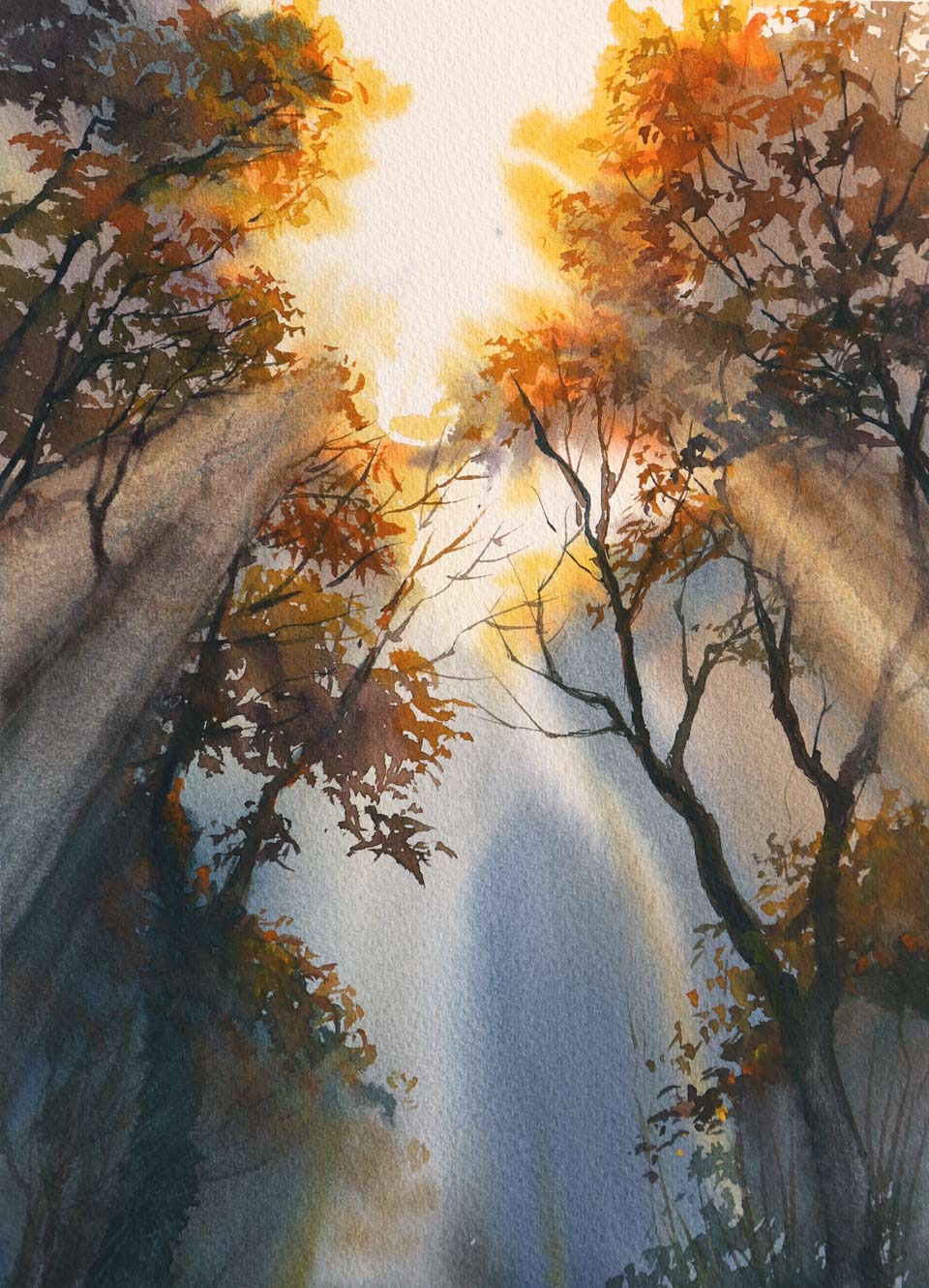Drawing with Clean Water Watercolor Painting Technique
Article by Vladimir London, Watercolor Academy tutor
When mastered, drawing with clean water gives great looking results

Painting by Vladimir London, Watercolor Academy tutor
The objective when drawing with clean water is to prepare the surface of the paper for taking paint for both wet-on-wet and dry-brush techniques.
Work begins on dry paper. Areas intended for a wet-on-wet technique are drawn with a flat brush in clear water or in a very pale tint. Areas intended for the dry-brush technique are left untouched. Surplus water on boarders can be absorbed with a semi-dry brush. The water drawing should not be too wet. Correct judgment of the necessary dampness will only come with experience.
When the drawing in water is finished and still wet, load a natural sable or a synthetic flat brush with the paint mix and apply with confident, fast brushstrokes across both the wet and dry surfaces.
The wetter the drawing, the less water needs to be on the brush. This can be controlled by the brush choice. Soft hair squirrel brushes are "water thirsty" and can hold too much paint. Sable brushes are less absorbent and have a nice, springy quality.
A very fast stroke creates an interesting effect. The brush leaves paint on the wet areas and glides across the dry patches, only touching the top surfaces of the paper tooth, as with dry-brush marks. Strokes on wet areas spread out, producing soft edges and gradations. The borders between wet and dry areas remain well defined.
Wet areas can be further developed using wet-on-wet and variegated wash methods. Dry areas can be continued with a wet-on dry technique.
This is an advanced method where everything depends on having the skills of a master. The result depends on many different factors, such as how damp the paper surface and wet the drawing are, how much paint is on the brush, the speed of movement and the pressure on the brush. Knowledge, experience and confidence play important roles here.
Gravity, water, quality of paper and brushes will also play certain roles, giving a degree of unpredictability and producing some accidental visual effects. This is not always a bad thing. A professional watercolor artist can turn such natural effects into an intended expressive style.
To learn how to paint in watercolor, enroll now
Watercolor Academy Online Course
A self-study, self-paced course where you can learn how to paint in watercolor by watching video lessons and doing assignments
- Unlimited access to 80 watercolor painting video lessons
- Lifetime membership without deadlines
- Unlimited support from the Academy tutors
- Constructive critique of your artworks
- Member access to the Academy's Art community
- Place in the Academy's Students Gallery
- Exclusive members-only newsletter and bonuses
- Watercolor Academy Diploma of Excellence in your name
One-time payment - Lifetime membership
$297 USD
ENROLL NOW
Personal Tutoring online + Online Course
One-to-one, unlimited and custom-tailored to your skills and needs Personal Tutoring by the Watercolor Academy teachers
- Everything in Online Course, plus:
- Dedicated team of art tutors
- Assessment of your current level of art skills
- Personalized curriculum tailored to your skills and goals
- Up to 100 art tasks with by-task assessment
- Unlimited one-to-one personal coaching with detailed per-task instructions and feedback
- Artwork critiques and results-oriented guidance
One-time payment - Lifetime membership
$997 USD
ENROLL NOW





